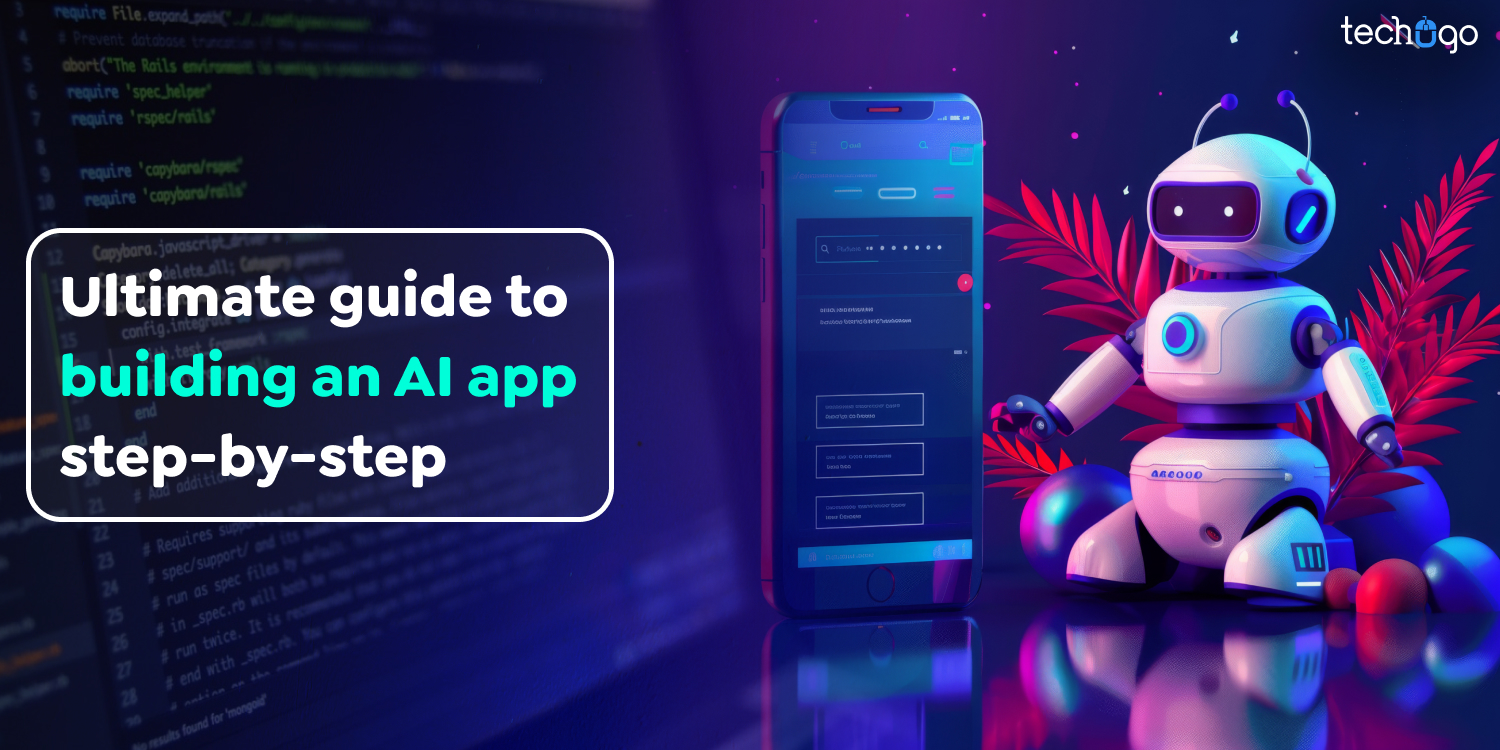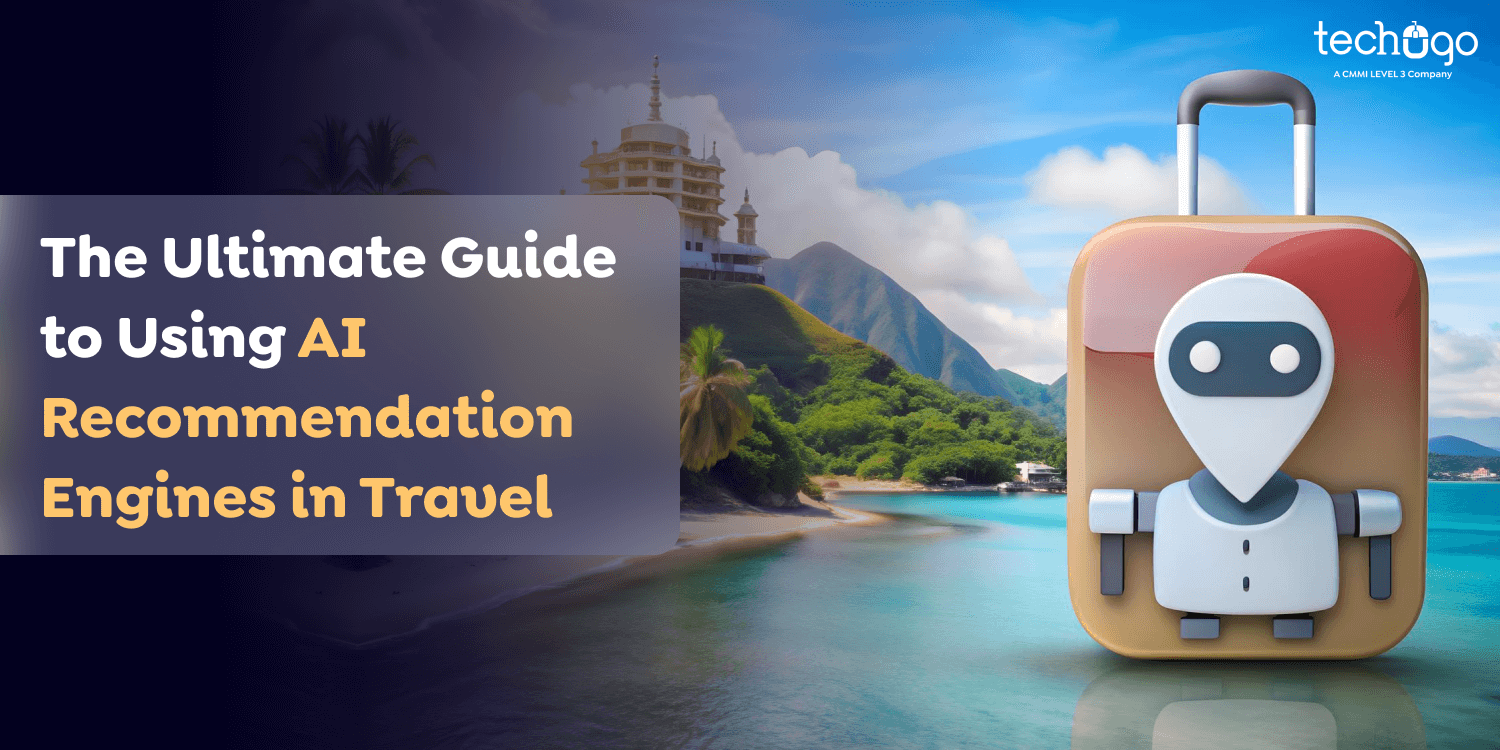19 Jul 2024
How IoT is Revolutionizing the Future of the Transportation Industry
Matthew Connor
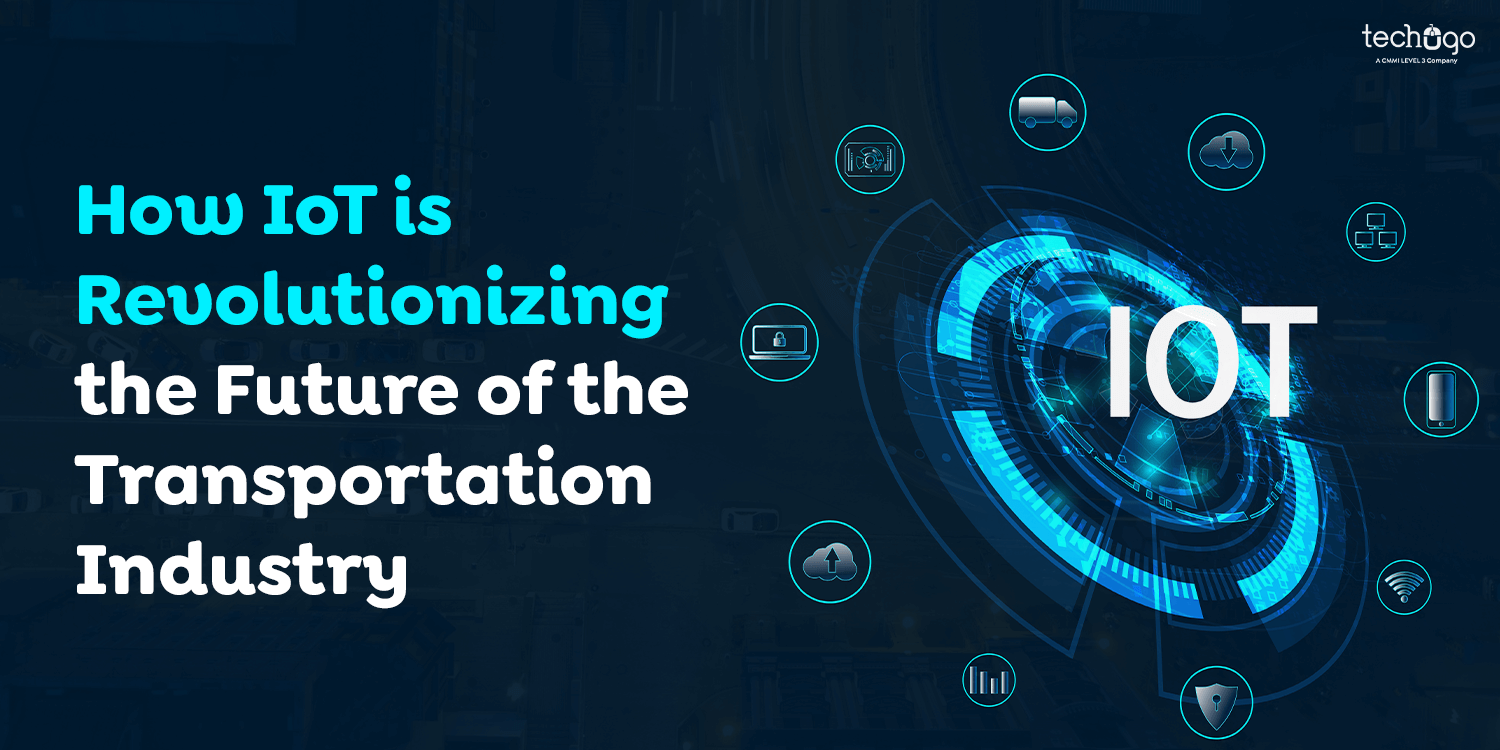
Imagine a scenario where your truck is not just hauling cargo but also communicating with you, your fleet base, and other vehicles on the road. IoT sensors in your vehicle can monitor everything from tire pressure to engine performance. This information, which can be used to implement IoT in transportation industry, helps to plan preventative maintenance, decrease unexpected breakdowns, and improve overall security.
The Internet of Things (IoT) drives innovation across various sectors, and the trucking industry is no different. As more and more fleets adopt these internet-connected devices, the industry is generally evolving for the good.
About 42% of American fleets currently utilize IoT technology, and the number is growing. IoT technology will soon revolutionize trucking. It is already in use in various businesses.
So, are you ready to learn more about it?
If yes, then let’s get started!
Defining IoT in the Trucking Industry
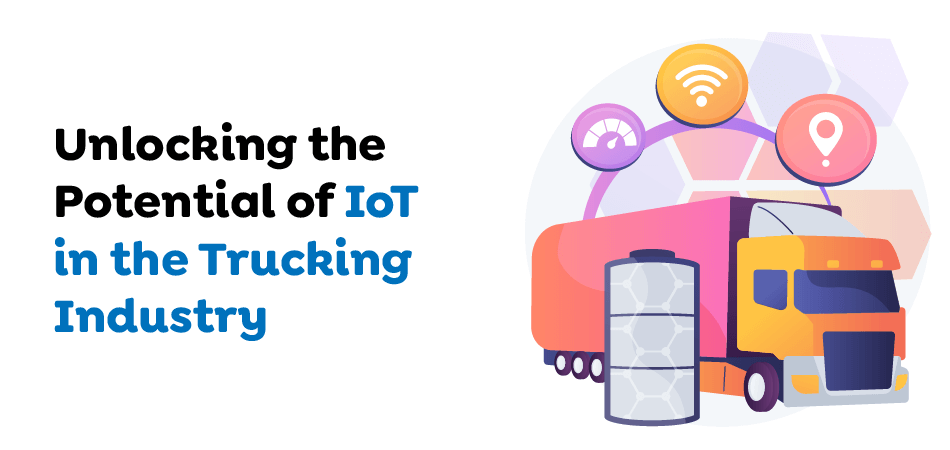
Internet of Things (IoT) is a collection of interconnected devices that can gather and exchange data without human intervention. In trucking, IoT connects various truck components, such as sensor systems, sensors, and communication devices, to facilitate efficient data transfer and automation.
In addition, IoT in transportation industry and trucking goes beyond the trucks themselves. It also includes the integration of smart infrastructure on transport routes, including smart traffic lights and road sensors, which will facilitate better and more efficient logistics processes. The interconnected system of devices and networks creates a complete IoT ecosystem that revolutionizes how goods are moved and controlled.
IoT is important in modern-day trucking because it can enhance efficiency, safety, and sustainability. Through IoT technological advances, firms can gain real-time insight into their fleet’s operations, reduce fuel use, improve maintenance procedures, and guarantee compliance with regulatory requirements.
Furthermore, IoT in transportation industry enables companies to develop prescriptive maintenance strategies. In this way, sensors track the health of crucial components in real-time and notify maintenance personnel of possible issues before they become serious. This proactive approach reduces downtime and improves overall safety on the road by reducing the chance of mechanical malfunctions that are not expected to occur.
Also Read : How to Develop an AI App: From Concept to Launch
Use of IoT in the Transportation Industry
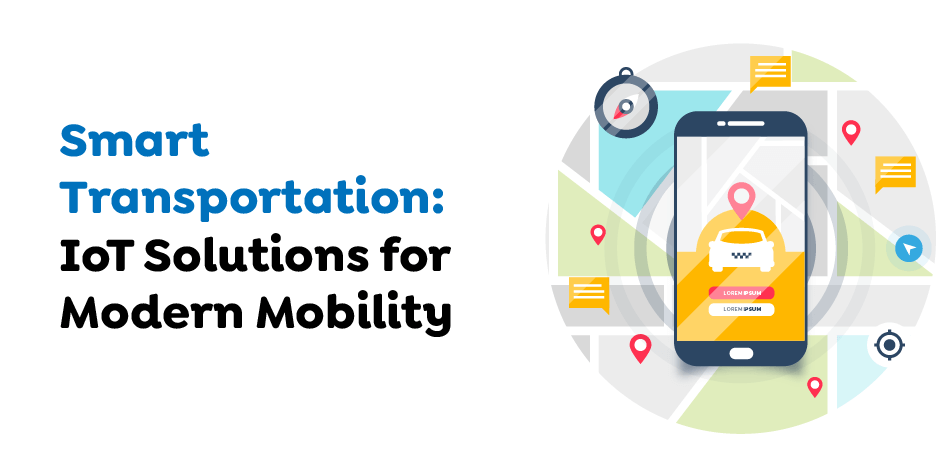
With cutting-edge technology, the transportation industry is now set to change how it operates. The transportation industry must hop onto the IoT bandwagon to ease the lives of its customers and themselves.
This is how IoT revolutionized transportation.
Truck/Trailer Weight Measurement
Many transportation businesses have difficulty accurately weighing their vehicles loaded with items, but it’s an essential step. A weighing system with IoT connectivity and smart sensors allows real-time weight measurement and transmits the data to users via mobile applications within seconds. It enhances the payload by improving payload, reducing fines, eliminating guesswork, and increasing efficiency.
Vehicle Tracking & Movement
We must control routes, drivers’ activities, vehicle movements, and fuel consumption to increase productivity and improve ROI. As traditional systems fail to meet expectations, businesses seek smart ways to improve their current procedures. They establish the direction for their businesses through IoT.
A vehicle management and tracking system allows you to monitor routes, control vehicles and drivers, manage fuel consumption, and more. IoT devices streamline operations by providing real-time information and giving users the information they need to make business decisions.
Container Temperature Monitoring
Maintaining the cargo at ambient temperature is crucial to protecting the vehicle, driver, and cargo. IoT-enabled temperature monitoring and humidity systems make it simple to spot variations in cargo temperature.
Mobile and web-based applications offer users instantaneous and 100% accurate information, increasing transparency and guaranteeing 100% security.
Also Read: How AI is helping the entire healthcare industry
Benefits of IoT Integration in the Transportation Industry
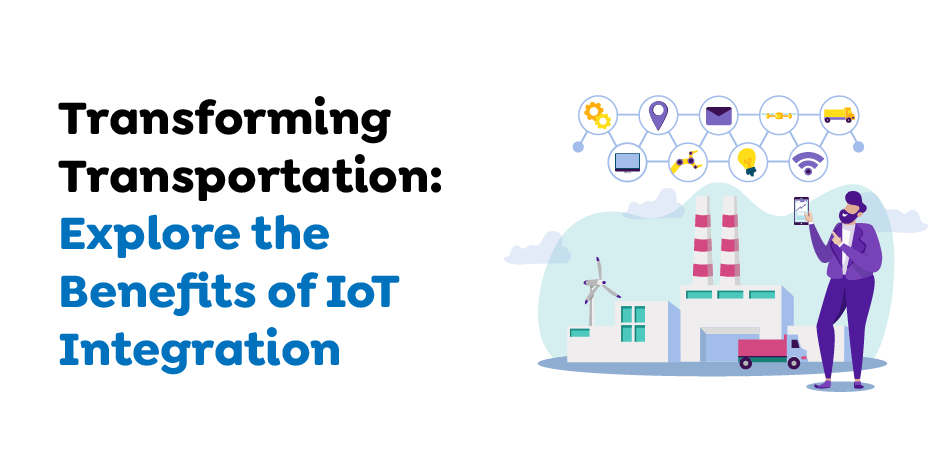
IoT is proving to be an essential element of every transportation industry segment. It’s extremely beneficial for customers who need it in all fields. Here are a few of the more common advantages.
Improve the Customer Experience
Although the logistics, transportation, and fleet industries don’t directly contact end customers, they play crucial roles in connecting businesses to them. IoT in transportation industry delivers real-time delivery data to consumers and managers, improving efficiency and preparing for future purchases.
Warehouse Administration
A well-run warehouse can immediately impact a transportation company’s ability to compete. Managers can use IoT to monitor inventory data, equipment, and vehicles to better assess their current condition and determine if any needs change. They can transmit important, precise data to the cloud, making sure that the required items are readily available when needed.
Vehicle Diagnostics and Upkeep
Businesses can utilize IoT to detect potential problems before they cost a lot of money, such as forceful braking or excessive idling. They can also boost the efficiency of their vehicles by employing more efficient routes, improving habitual driving, and optimizing the scheduling. Furthermore, it’s important to talk about reducing the total cost of ownership (TCO) by eliminating breakdowns caused by dangerous driving, flat tires, dead battery packs, or damage caused by accidents.
Instead of waiting for a problem, IoT-enabled technology allows proactive maintenance. This involves visiting places and replacing components before issues occur.
Safety and Privacy
The IoT allows self-driving cars to connect instantly using information from various sources. This decreases the chance of a crash because sensors with smart capabilities and cars can communicate easily about future traffic delays or incidents on the current route. Drivers receive updates on a timely basis when there is an accident or traffic congestion road closures, which allows them to change their route as quickly and efficiently as possible.
In logistics, IoT provides security throughout the process, including inventory management, cloud storage, data storage, and warehouse administration. It helps develop strong security for data access over secure networks and safeguards against cyberattacks.
Tracking and Compliance for Vehicles
Long-distance runs can strain your vehicle’s health. If not taken care of, poor vehicle health conditions can affect the safety of both the driver and the security of the equipment. Vehicle health data can be sent to fleet management through IoT devices. The data is sent as small packets on an internet-connected mobile network to ensure that it is received even in areas with weak connectivity.
IoT in transportation industry can assist organizations in complying with various regulations. For instance, an IoT sensor application developed by a leading mobile app development company in Canada could be integrated into vehicles to transmit TPMS measurement data to ensure maximum load compliance for road travel.
Assembled Transportation System
Through monitoring the vehicle’s performance, IoT can deliver real-time information about the location of the bus, departure times, delays, and other important notifications to passengers. Traffic lights along roads and highways are usually controlled or monitored remotely using data from connected vehicles. The volume of traffic data collected from dedicated short-range communications systems (DSRC) such as they can be used to control traffic signals.
Congestion levels are tracked using systems of DSRC devices placed on roads to control light pattern changes at major intersections and main roads. Additionally, connected car technology alerts motorists when it’s time to replenish their fuel, helping them avoid unnecessary delays in their journeys.
How to Start with IoT Implementation in the Transportation Industry?
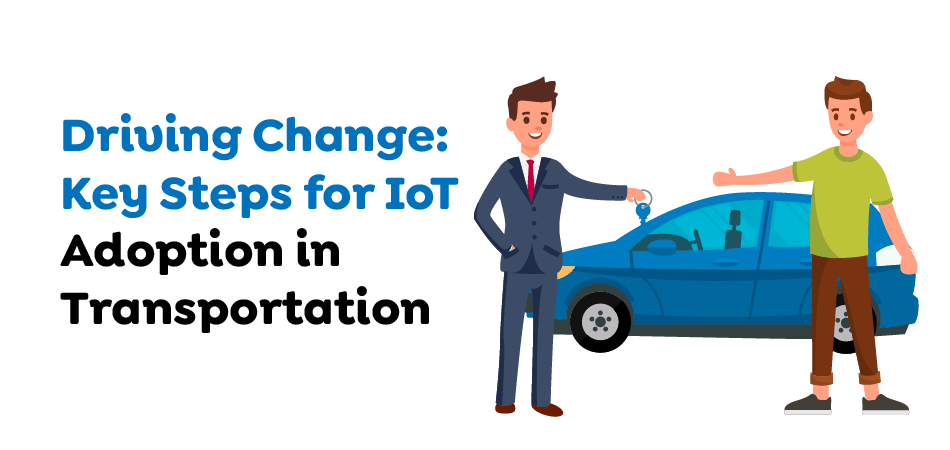
A strategy-driven approach is essential for effectively utilizing IoT in transportation industry. Here’s how companies can incorporate IoT through five key phases, each highlighting its importance in ensuring effective implementation and acceptance.
Set Business Goals
Before implementing IoT, it is essential to define clear business goals. Consider: What issues do you want to address or opportunities do you hope to maximize through the integration of IoT in transportation industry?
For instance, increasing visibility into supply chain operations, improving fleet management efficiency, or enhancing warehouse operations. Understanding these goals is crucial because they determine the overall IoT strategy and define the success metrics.
Create Use Cases for IoT
Once you have established your goals, you can create use cases tailored to your logistics and transportation requirements. Consider scenarios such as real-time asset tracking, prescriptive maintenance of equipment and vehicles, or even driver behavior monitoring to ensure safety and security.
Each use case should align with business goals and provide tangible benefits, such as cost savings, operational efficiency improvements, or better customer service.
Develop a Vision and Roadmap for IoT
Making a plan and vision will provide clarity and direction throughout the IoT deployment process. Determine the nature of the IoT project, calculate the cost, and set a timetable for each deployment phase.
Identify the key milestones, technology requirements, and allocation requirements. The roadmap acts as a model, providing the decision-making process and determining the priority of resources as the project develops.
Launch IoT Pilot or Proof of Concept (PoC)
To minimize risks and confirm the feasibility of your idea, begin with a smaller-scale IoT test (or Proof of Concept (PoC)). Choose a specific use case or portion of your logistics operation to evaluate IoT applications in a controlled setting.
Assess performance against established success criteria and collect feedback from all stakeholders. This iteration method allows for modifications and refinements before scaling to a larger implementation.
Implement the Initiative
With the knowledge gained from the pilot, move towards a full-scale implementation aided by a thorough plan and technical know-how. Partner tightly with your technology partner and IoT service providers to ensure seamless integration of IoT in transportation industry.
Use robust data management techniques to efficiently handle the volume of real-time incoming data from IoT devices. Track performance metrics regularly and adjust based on insights to maximize results.
Impact of IoT on the Future of Trucking Industry
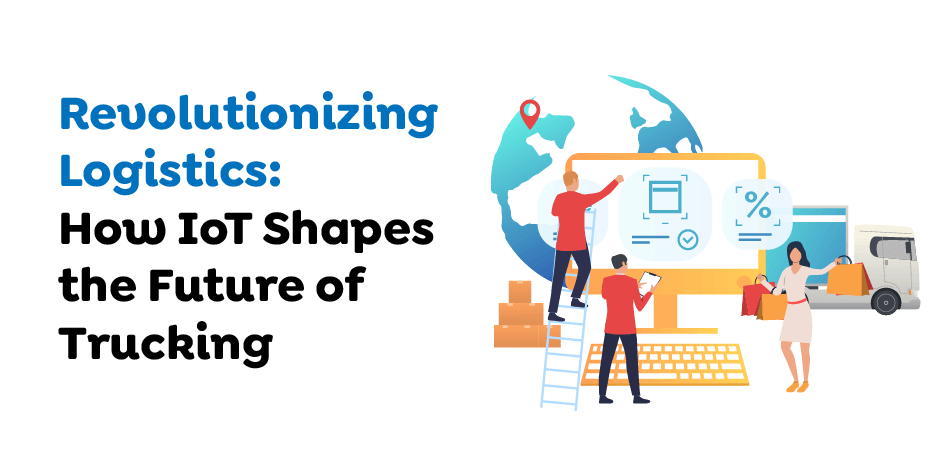
In the last couple of years, the logistics, transportation, and transport IoT ecosystems have increased in sophistication and size as more vehicles and assets are connected to the cloud. We’re just beginning to understand the full potential of this data.
As mobile network technology advances, automated, self-driving cars will be controlled by secure and shared data through the connected transport ecosystem. Fleet owners can attain more sustainable standards and corporate accountability through IoT technologies beyond operational efficiency.
Real-Time Fleet Monitoring
IoT technologies revolutionize fleet management, providing immediate information on trucks’ whereabouts, state, and performance. Logistics firms can continuously monitor their fleets by integrating GPS sensors, trackers, and Telematics systems.
This feature increases operational efficiency, security, and compliance for the fleet. Monitoring in real-time can be used to make proactive decisions, such as redirecting vehicles to avoid road congestion or responding quickly to emergencies.
Managers can monitor vehicle speeds, fuel consumption, vehicle health, and driver behavior remotely, which helps optimize resource use and decrease operating costs. For instance, pre-emptive maintenance alerts based on IoT information can trigger pre-emptive servicing, preventing costly breakdowns and reducing downtime.
Predictive Maintenance
Predictive maintenance powered by IoT is an industry-changing innovation in transport and trucking. IoT sensors in trucks monitor mechanical components in real time, capturing information about factors such as the engine’s temperature, oil pressure, brake wear, and more.
The constant flow of data can allow predictive analytics software to spot patterns and anomalies that indicate possible failures before they happen. Identifying problems early and allowing fleet managers to plan maintenance reduces the amount of unplanned downtime and associated expenses.
For instance, sensors could detect abnormal vibration patterns inside an axle, indicating an imminent bearing issue. This alerting system allows for prompt intervention and replacement of the part before it is completely damaged, avoiding expensive repairs and limiting disruptions to delivery times.
Route Optimization
IoT plays a crucial part in optimizing routes for transportation and trucking. Logistics firms can modify routes continuously in real-time by utilizing IoT information from various sources, such as GPS and traffic sensors, weather forecasts, and traffic patterns from the past.
This feature guarantees that trucks use the most efficient routes to get there while avoiding congestion, road closures, traffic jams, and extreme weather conditions. Optimizing routes not only decreases emissions and fuel consumption but also improves delivery accuracy and speed.
Driver Safety Solutions
IoT technologies are revolutionizing driver safety in the transportation industry and trucking. With the help of IoT-enabled devices, such as driver monitoring systems, failure detection sensors, and Telematics solutions, fleet administrators can monitor drivers’ behavior and vehicle operation can monitor drivers’ behavior and vehicle operations in real-time and analyze variables like the speed of acceleration and velocity, brake patterns, and compliance with safety guidelines. In the event of identifying dangerous behaviors and signs of fatigue, IoT alerts can trigger immediate intervention, for example, warning the driver or sending assistance.
This proactive method will not only improve road safety but also decrease the risk of accidents and their costs. For instance, fatigue detection sensors detect drowsiness in drivers by analyzing eye movements, which triggers alarms to take rest breaks to avoid injuries caused by fatigue.
Smart Warehousing
Smart warehouses enabled by IoT are changing the way that inventory management is conducted and the efficiency of logistics operations. With the help of IoT sensors and RFID tags, as well as automated warehouse systems, they can check inventory levels, track the location of assets, and simplify the process of fulfilling orders.
These technologies offer real-time insight into stock movement and levels, allowing prompt replenishment and efficient space use. Smart warehouses use IoT analytics to simplify inventory audits, reducing manual labor while making it easier to avoid mistakes.
For instance, IoT sensors can monitor perishable products’ humidity and temperature levels, ensuring that they comply with storage requirements and prevent spoilage. Automated packing and picking systems aided by IoT data can improve order fulfillment speed and accuracy, improving customer satisfaction and reduced cost of fulfillment.
Environmental Monitoring
IoT technologies help improve the sustainability of transport and trucking by monitoring environmental conditions in real-time. Sensors in cargo containers and vehicles can detect factors like temperature and humidity of air or light exposure.
This information helps to ensure compliance with the regulations when transporting delicate goods, such as pharmaceuticals or edible food products that can be perishable. For example, IoT sensors can monitor temperature-sensitive pharmaceutical shipments and provide continuous temperature logs to verify adherence to storage requirements throughout transportation.
Environmental monitoring is also part of sustainability efforts, maximizing fuel efficiency and cutting carbon emissions. By analyzing IoT-generated data about vehicle performance and driving patterns, logistics companies can pinpoint opportunities to reduce fuel use and greenhouse gas emissions.
For instance, routing optimization based on actual traffic updates and historical data helps to reduce idle time and improve fuel consumption for all fleets. Monitoring environmental impacts improves transparency and accountability, which supports corporate sustainability goals and compliance with regulatory requirements.
Blockchain Integration
When paired with IoT in transportation and trucking, it improves supply chain efficiency, security, and transparency. Blockchain’s decentralized ledger system stores and confirms the authenticity of data generated by IoT and creates an irrevocable record of all transactions and events throughout the chain.
Blockchain’s transparency increases the trust and accountability of all stakeholders, from suppliers and manufacturers to logistics companies and consumers. Blockchain, for instance, can monitor the source, ownership, and movements of goods across all stages of the distribution chain, giving complete transparency and reducing the chance of counterfeit goods or unauthorized alterations.
Blockchains that use smart contracts in their transactions allow for the automation of contracts based on predefined terms, like delivery deadlines and payment conditions, streamlining transaction procedures and reducing administrative overhead.
Blockchain’s cryptographic security measures safeguard IoT data from unauthorized access or manipulation, assuring its integrity and confidentiality. By combining IoT’s live-time data capture capabilities with blockchain’s secure and transparent ledger, logistic firms can improve operations in the supply chain, minimize risks, and provide greater value to their customers.
Data Analytics
The data generated by IoT in transportation industry fuels the latest analytics capabilities that allow decision-making based on data and optimizing operations. By collecting and analyzing huge quantities of real-time data from IoT sensors such as GPS trackers, GPS, and telematics devices, logistics firms gain valuable insights into the performance of their fleet’s operational efficiency and customer behavior. For instance, predictive analytics can predict demand patterns from previous sales data and IoT-derived data, which can help optimize the management of inventory and resource allocation.
Data analytics can also help with proactive maintenance plans by identifying abnormalities or patterns that indicate possible failures. By integrating IoT data alongside other sources, such as traffic conditions, weather forecasts, and economic indicators, logistic companies can improve routing planning and strategies for managing fleets.
Advanced analytics methods like ML and AI in transportation industry analyze large datasets to reveal actionable information and improve decision-making. For instance, anomaly detection algorithms can detect unusual patterns in vehicle performance, alerting maintenance teams to issues that could become costly repairs or even downtime.
By harnessing the power of data generated by IoT and advanced analytics, firms can boost innovation, increase operational efficiency, and offer top-quality customer experience.
Integration with Autonomous Vehicles
IoT connectivity with automated trucks and vehicles in transportation opens new possibilities for safety, efficiency, and the ability to scale. Autonomous trucks equipped with IoT sensors, GPS tracking systems, and live-time communication technology can work with increased efficiency and dependability.
IoT allows unimpeded communication among autonomous vehicles and infrastructure, enhancing traffic flow and decreasing congestion. For example, IoT-enabled car-to-car (V2V) communication allows the coordination of maneuvers and collision prevention strategies, improving the overall safety of roads.
Autonomous trucks with IoT sensors constantly check weather conditions and road conditions, forecast traffic patterns, and adjust routes and speeds in real-time to improve fuel efficiency and delivery times. Logistics firms can optimize their fleet management strategies and operational decision-making by integrating IoT data and autonomous vehicle control.
For instance, predictive analytics algorithms analyze the data generated by IoT to predict traffic patterns and improve the route of autonomous vehicles. With the help of IoT’s live-time data capture capabilities and autonomous vehicle technology, logistics firms can improve efficiency in their operations, reduce transportation costs, and offer superior service to their customers.
Enhanced Customer Experience
IoT technologies for transportation app development enhance the customer experience by providing instant visibility, proactive communications, and customized services. IoT-enabled tracking systems and tracing systems let customers monitor the condition and location of their deliveries in real-time, increasing their customers’ transparency and confidence. For instance, IoT sensors in trucks and containers give regular updates regarding the shipment’s progress, allowing customers to predict delivery times and prepare accordingly.
Alerts and proactive notifications based on IoT data alert customers to possible delays, allowing them to modify their plans or arrange alternate arrangements. Customized service offerings triggered by IoT data on customers’ preferences and habits improve loyalty and engagement. For instance, IoT-enabled analytics can look at past purchase patterns and delivery preferences to provide customized delivery options or even promotions.
With the help of IoT’s real-time data capture capabilities and analytics-driven insights, logistics firms can customize their services to satisfy customers’ individual needs and preferences. Enhancing customer experience can result in loyal customers, repeat sales, and positive recommendations from friends and family, which can lead to an increase in business and competitive advantages in the transportation and trucking sectors.
Supply Chain Visibility
IoT increases visibility in the supply chain by providing real-time information about the movements and status of products throughout the logistics chain. RFID tags and sensors track inventory throughout the complete process, from production to delivery, which allows for precise inventory management while reducing the risk of stock-outs or excess inventory. For instance, IoT-enabled supply chain visibility permits logistics managers to track delivery progress, pinpoint bottlenecks, and optimize delivery times to increase efficiency.
Eco-Friendly Initiatives
IoT helps sustain sustainable initiatives in trucking and transportation by maximizing the efficiency of the vehicle’s fuel consumption, reducing carbon emissions, and promoting eco-friendly methods. Smart sensors track vehicle performance indicators like engine efficiency and emission levels in real-time, allowing data-based decision-making to reduce environmental impact.
For instance, IoT-enabled Eco-Driving methods analyze drivers’ driving habits and offer strategies for reducing fuel consumption, such as the most efficient timing and braking, to decrease emissions from greenhouse gases and fuel consumption.
Regulatory Compliance
IoT aids in compliance with regulatory requirements by recording and monitoring information about emissions, safety, and operational standards. IoT sensors can monitor compliance with regulations regarding driver hours, vehicle maintenance schedules, and environmental requirements, assuring compliance with legal regulations. For instance, IoT data logs can provide detailed information about driver rest time and maintenance tasks, which can be used to support audits and inspections by regulatory authorities.
Risk Management
IoT reduces the risk of transport and trucking by monitoring vehicle drivers’ behavior, vehicle conditions, and external factors like road and weather conditions in real-time. Predictive analytics algorithms review IoT data to determine possible risks, like maintenance problems or unsafe driving habits, which allows proactive actions to stop accidents and disruptions.
For instance, IoT-enabled risk management systems could warn fleet managers of adverse weather conditions along routes and allow for prompt routing to ensure driver and cargo safety.
Business Intelligence
IoT-generated data drives business intelligence efforts in trucking and transportation, allowing for strategic decision-making and improvements in operational efficiency. Advanced analytics tools analyze IoT data streams to discover useful insights, like patterns in customer demand operations, operational inefficiencies, and cost-saving opportunities.
In particular, IoT-driven company intelligence could optimize logistical logistics in the supply chain by determining the optimal inventory levels, enhancing delivery routes, and allocating resources to ensure maximum profit and customer happiness.
Why Partner with Techugo for IoT Integration in Transportation?
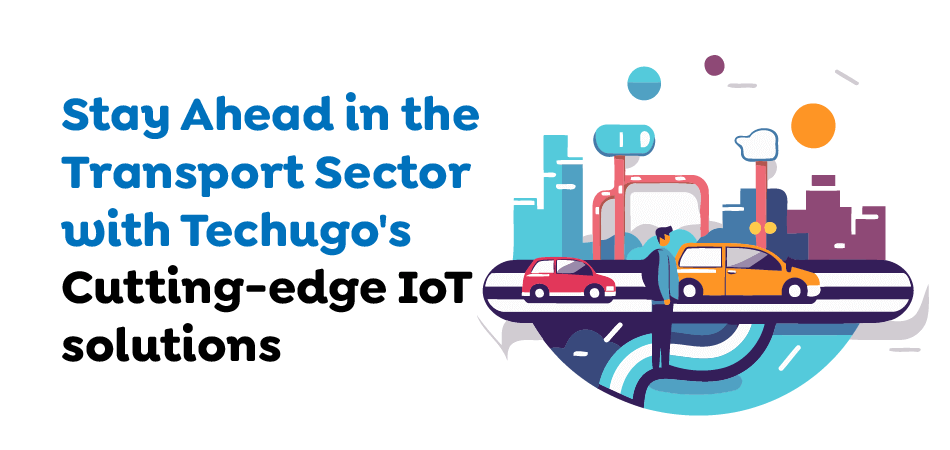
Collaborating with Techugo, a top mobile app development company in Canada, delivers unparalleled expertise in building custom solutions tailored to the distinctive needs of the transport industry. With a proven track record of successful IoT integrations, Techugo guarantees seamless connectivity, real-time data analytics, and improved operational efficiency. Their creative technique and cutting-edge technology certify firms to optimize fleet management, enhance protection, and acquire sustainable growth. Partnering with Techugo indicates leveraging industry-leading expertise in mobile app development to drive transformation and stay ahead in the competitive landscape.
The Key Takeaway
IoT is a sophisticated system that has assisted a variety of industries in making positive advancements. In addition, it has led to remarkable advancements in the truck industry, with remarkable utilization of IoT in transportation industry.
The companies could work on harnessing IoT’s connectivity IoT and its capacity for predictive analysis that can streamline different processes, improving the company’s profits or, for example, whether it’s controlling the temperature or taking over the time to deal with risky circumstances like tire blowouts the fleet owners as well as the drivers will be able to work together effectively to serve the consumer better.
The approach is far more secure, reliable, and cost-effective when modernized logistics solutions care for the driver, the business, and the customers.
Get in touch with us today to transform your fleet management with IoT integration.
Get In touch
We are excited to here from you and let’s start something special Together. Call Us for any inquiry.
Write us
sales@techugo.caJust a call away
About you

